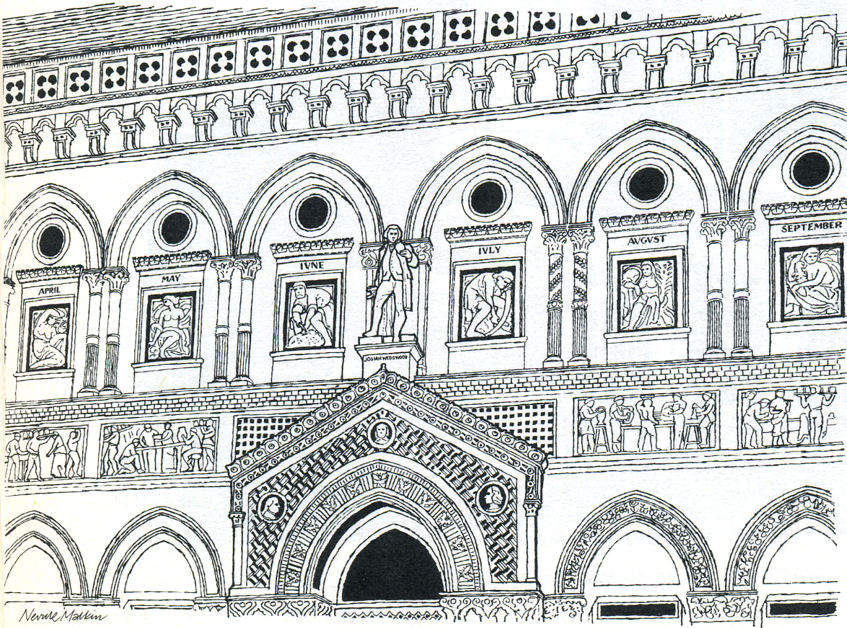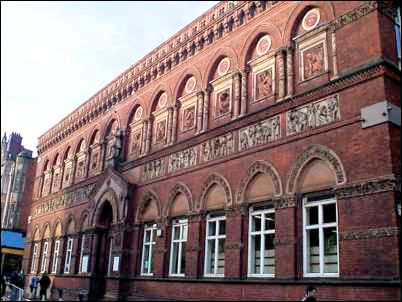photo:
Steve Birks
- Dec 1999
The striking edifice of the Wedgwood Institute was erected by R.
Edgar and John Lockwood Kipling (father of Rudyard Kipling) and
took six years to complete.
Public Library, the former Wedgwood Institute,
built as a library, art school etc in 1869.
Original plans prepared by G.B. Nichols of
Wolverhampton, design modified by Robert Egar and J. Lockwood
Kipling. Brick with terracotta dressings and plain tiled roof. 2
storeys, a richly ornamented facade with central doorway in
slightly advanced gabled porch enriched with terracotta frieze
and shafts to arched entry, flanked by busts in shallow niches,
and with tiles around the archway. It is surmounted by a bust of
Josiah Wedgwood.
Windows form a continuous arcade on both
storeys, and between the storeys, are 10 bass relief terracotta
panels by M.H. Blanchard or Rowland Morris which depict
processes in the manufacture of pottery.
Above the upper windows, a further series of
terracotta panels set in arcading illustrate the months of the
year, and over them, a further arcade with mosaic signs of the
zodiac. Heavy eaves cornice carried on console brackets with a
terracotta frieze of pierced quatrefoils above. The
architectural ornamentation, though not the applied sculpture,
continues round the side elevations for several bays.
(The Buildings of England: N. Pevsner:
Harmondsworth: The Victoria History of the Counties of England:
RB Pugh: Staffordshire: Oxford).
 on the Wedgwood
Institute Building
on the Wedgwood
Institute Building
Queen Street
is named after the pottery ware Wedgwood made for Queen
Charlotte in 1765.
The Institute
stands on the site of the Brick House pottery works which was
rented by
Josiah Wedgwood
from 1762 to 1770 - this was the second of his potworks in
Burslem (the first being the Ivy House works).
The foundation
stone was laid by future Prime Minister - William Gladstone on
26 October 1863. The frontage of the Institute contains twelve
huge terracotta tiles depicting the months of the year. Also
displayed are the carvings of the people of the Potteries
performing their different skills, together with a statue of
Josiah Wedgwood.
The Institute was
built with funds raised by public subscription to make arts,
science and literature available to all, not just the rich who
had previously had the only access. It was also designed to be
the main centre for arts activity in the Six Towns of the
Potteries.
During the late nineteenth century the
Institute played its part in producing ceramic artist, William
Moorcroft; author,
Arnold Bennett;
and pioneer of radio, Oliver Lodge. The Institute also features
regularly in the works of Arnold Bennett.
The Institute
continued as a successful seat of learning in its own right
through most of the 20th Century before becoming an annex for
Staffordshire University and most recently Stoke-on-Trent
College. In 1993 the building was inspected in the light of new
fire escape regulations and its use was consequently restricted
to the ground floor. The College ceased using of the Institute
later that year leaving only the Library in residence.
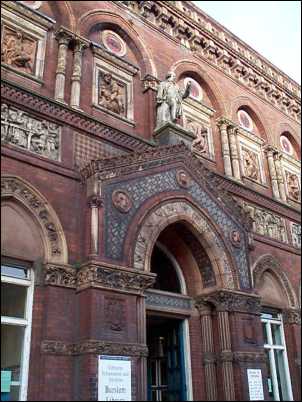
Statue of
Josiah Wedgwood over the entrance to the Wedgwood Institute
The statue of Josiah
Wedgwood was not added until 1873
photo: Dec 1999
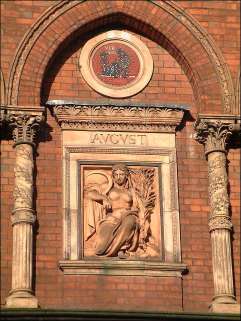
On the upper storey a series of
twelve terracotta panels set in arcading illustrate the months
of the year, and above them mosaic signs of the zodiac.
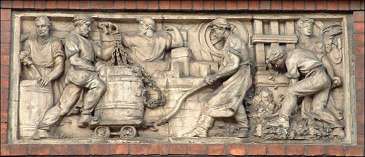
Between the storeys are ten relief
terracotta panels which depict the processes involved in the
manufacture of pottery.
The process panels depict crowded scenes in pottery workshops.
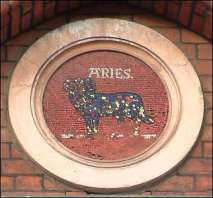
Signor Salviati executed the zodiac
mosaics
 on the month panels
on the month panels
Arnold Bennett's
inclusion of the Wedgwood Institute in his novels.......
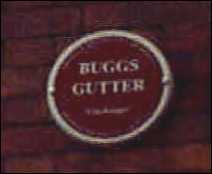
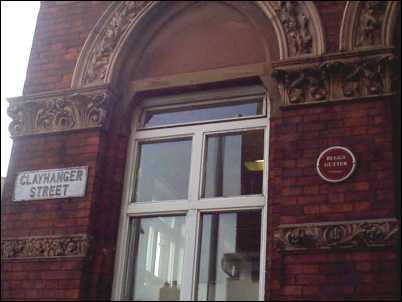
The side of the Wedgwood Institute
is in 'Clayhanger Street' (after Arnold Bennett's novel of the
same name).
In Bennett's novels the small
passageway was called 'Buggs Gutter"
On the 1898 map this passage is
named 'Baker Street'
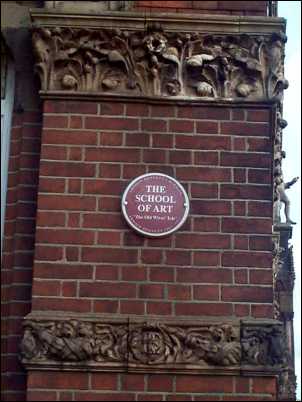
The Wedgwood
Institute featured in Arnold Bennett's novels as 'The School of
Art'
photos: Steve
Birks - Dec 1999
![]()
